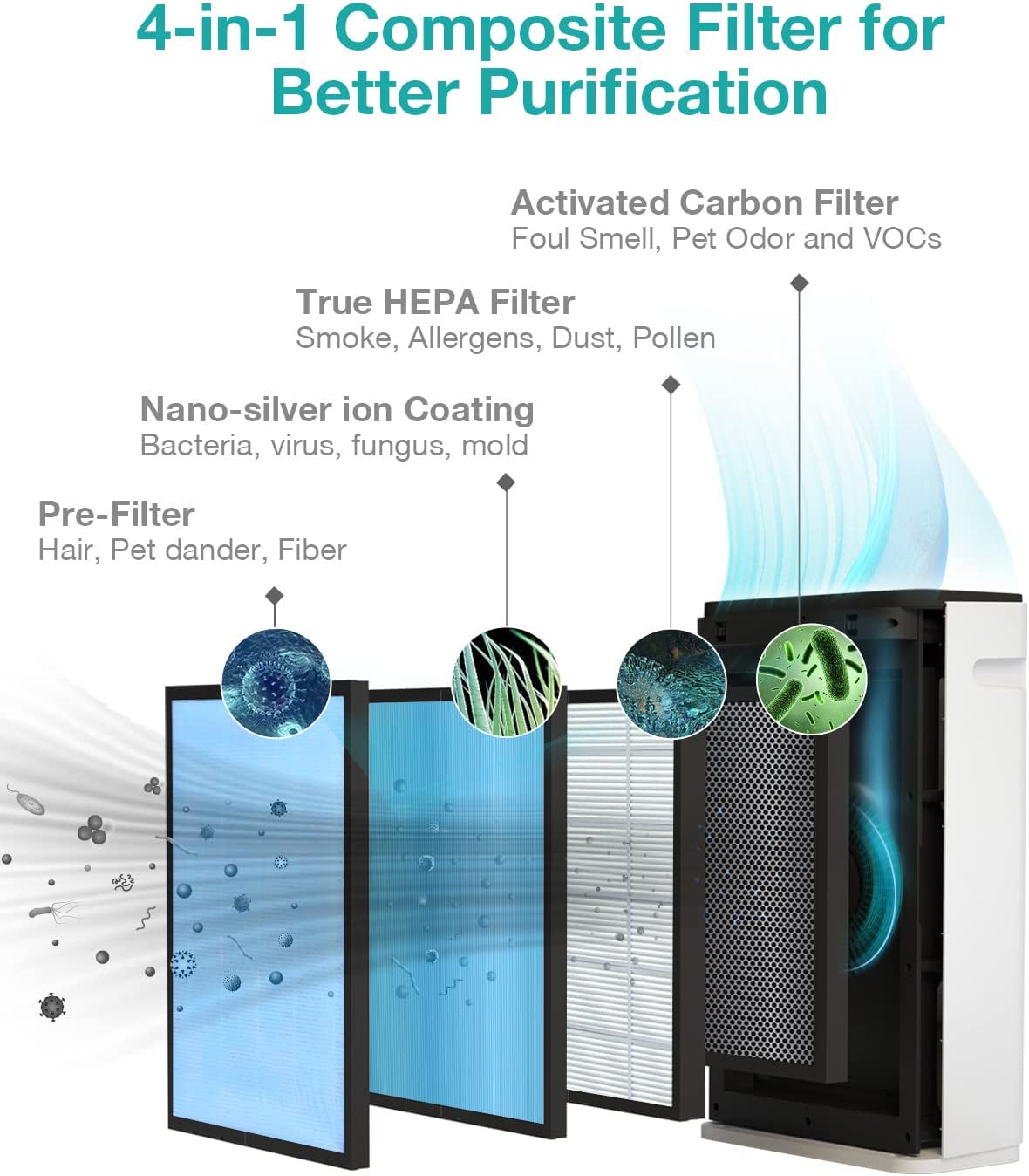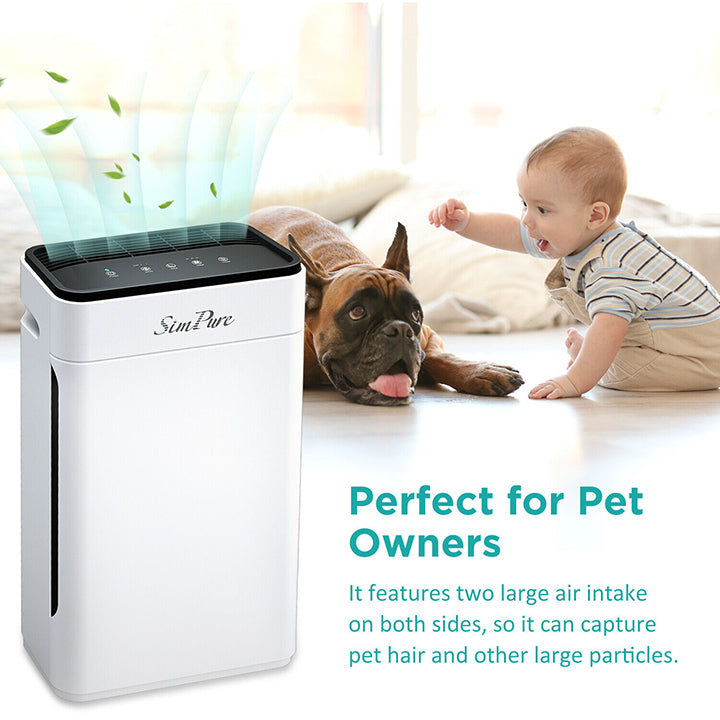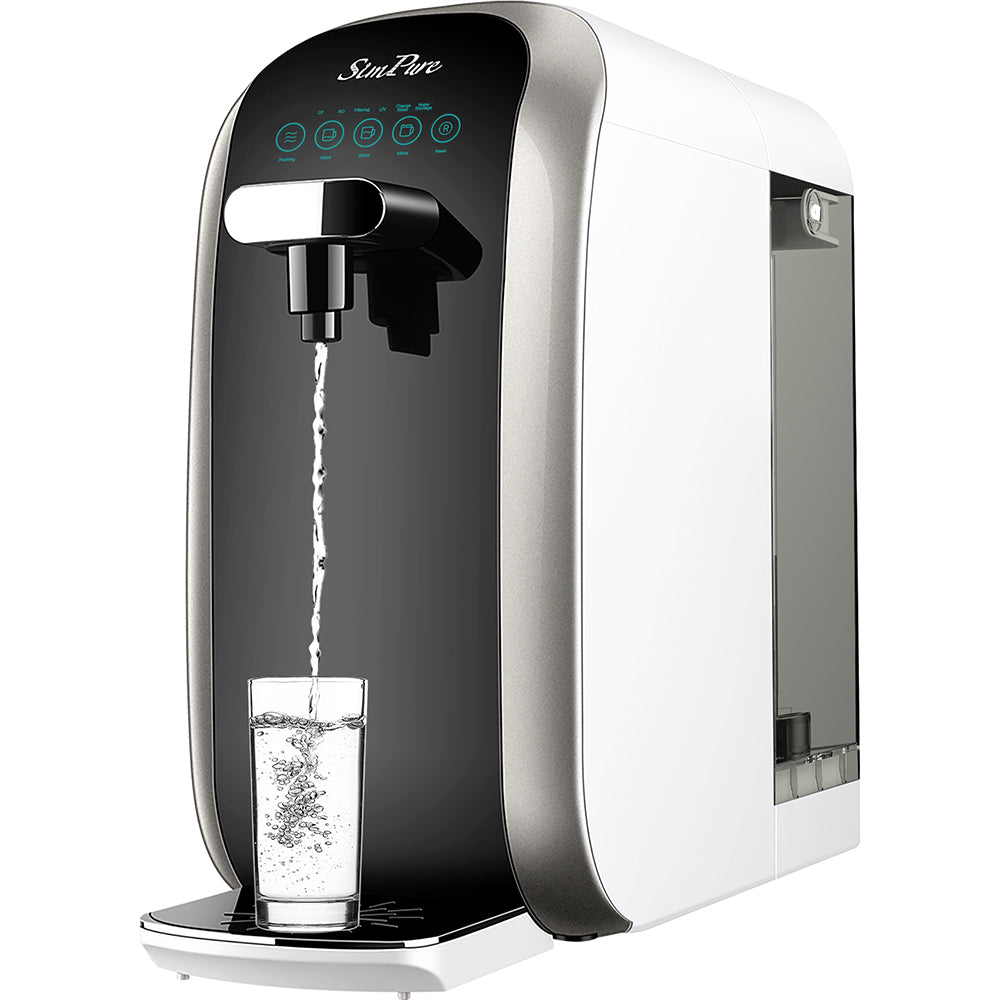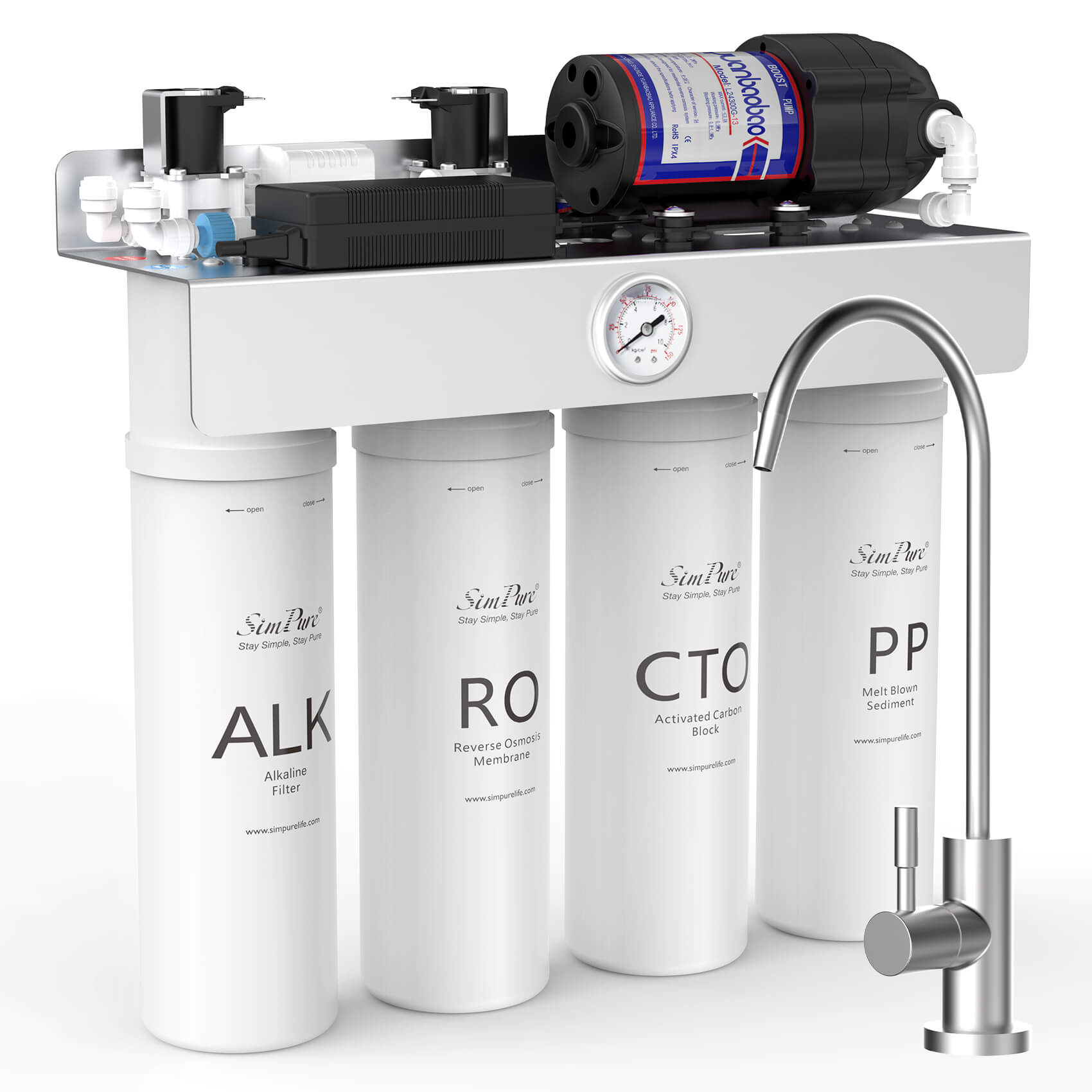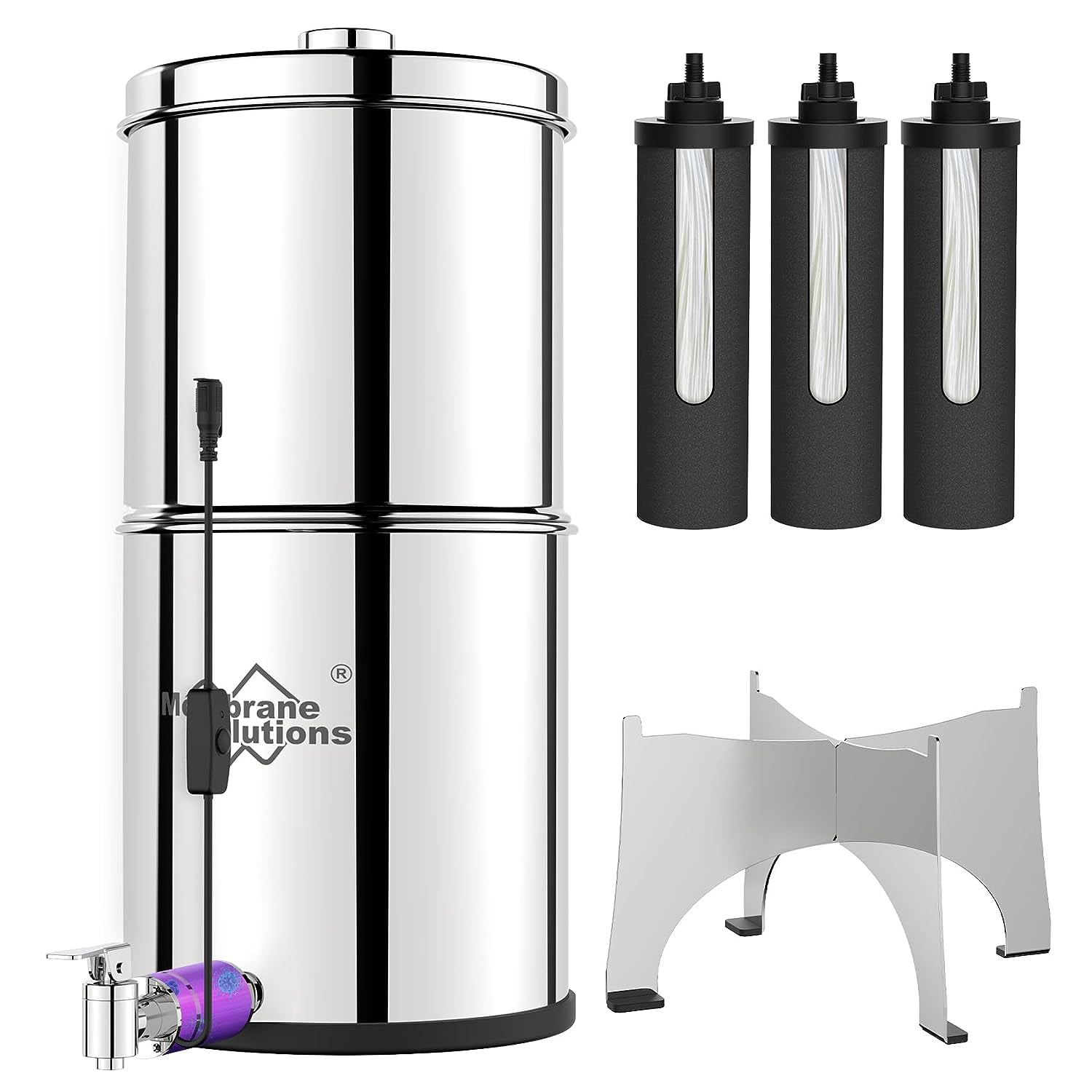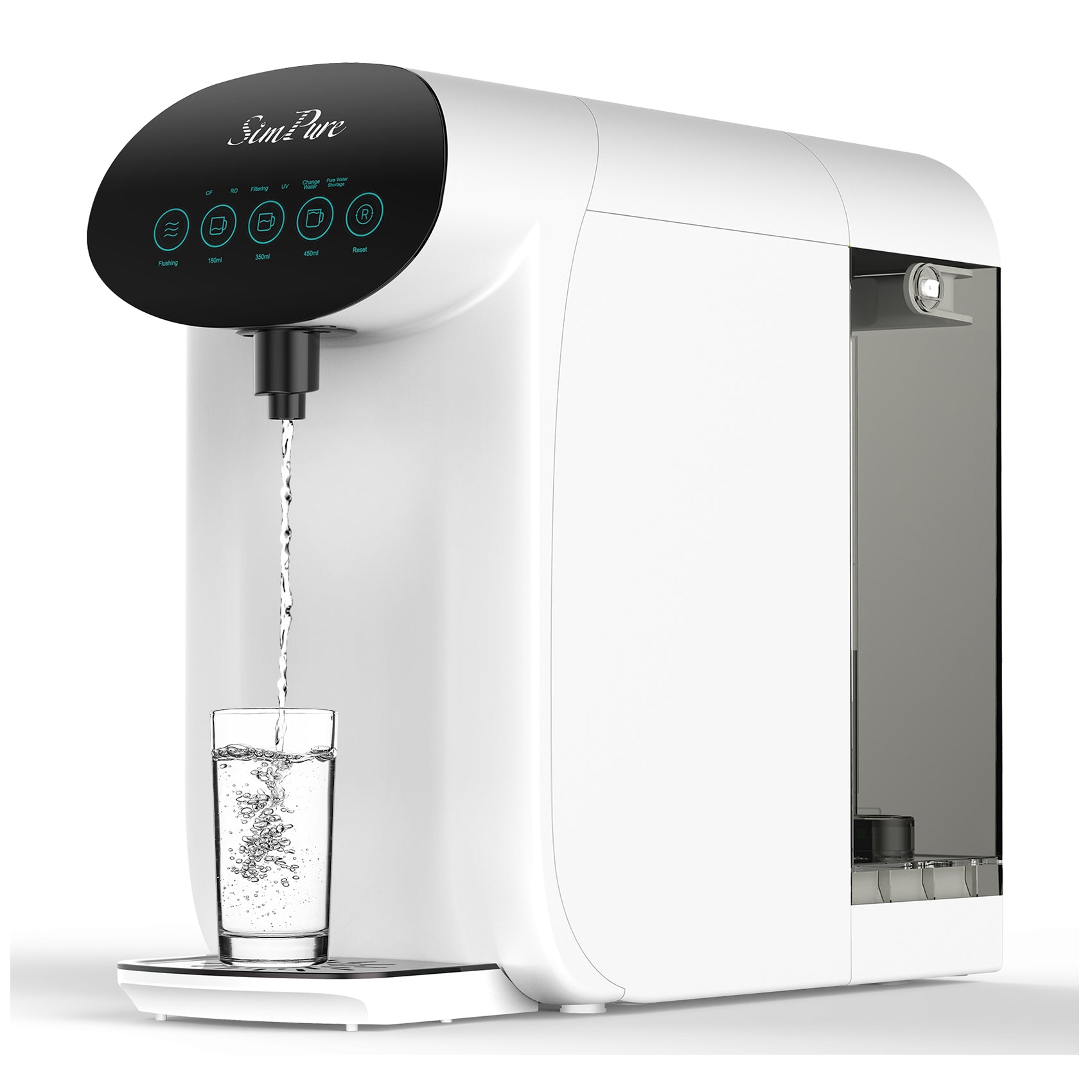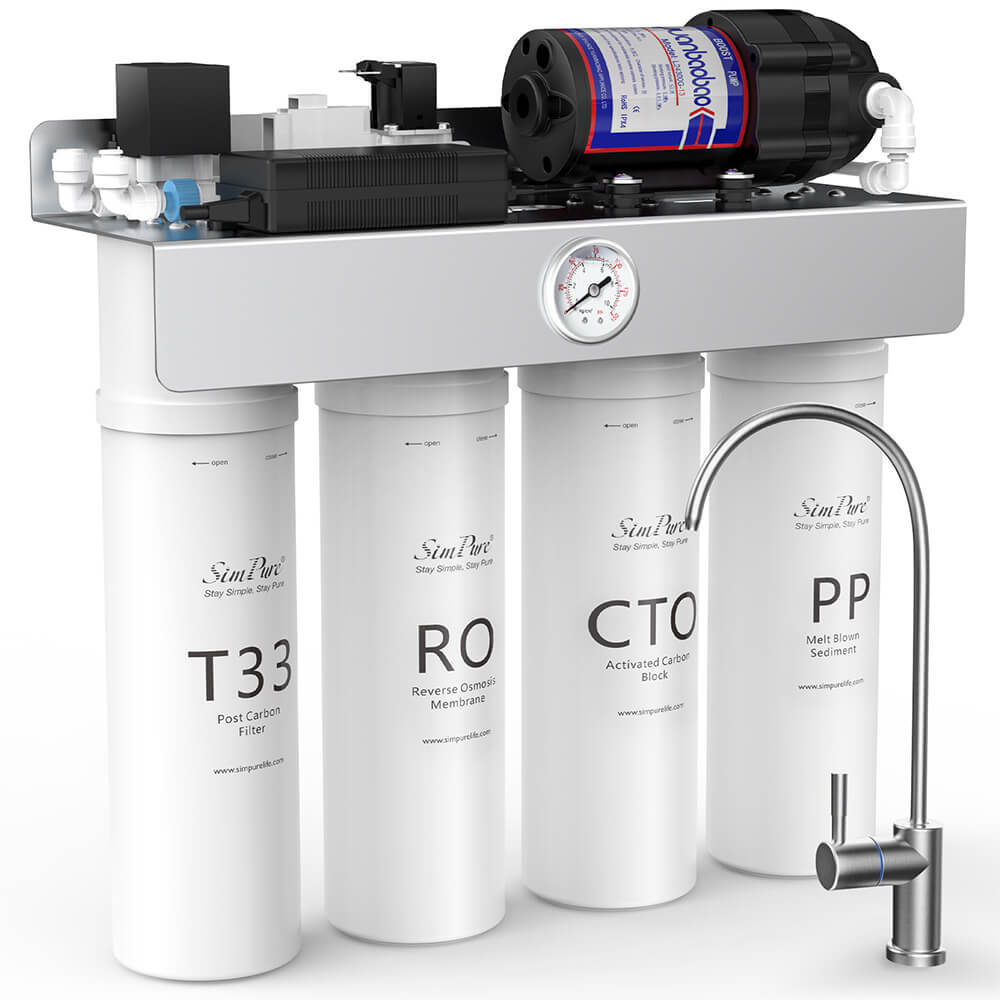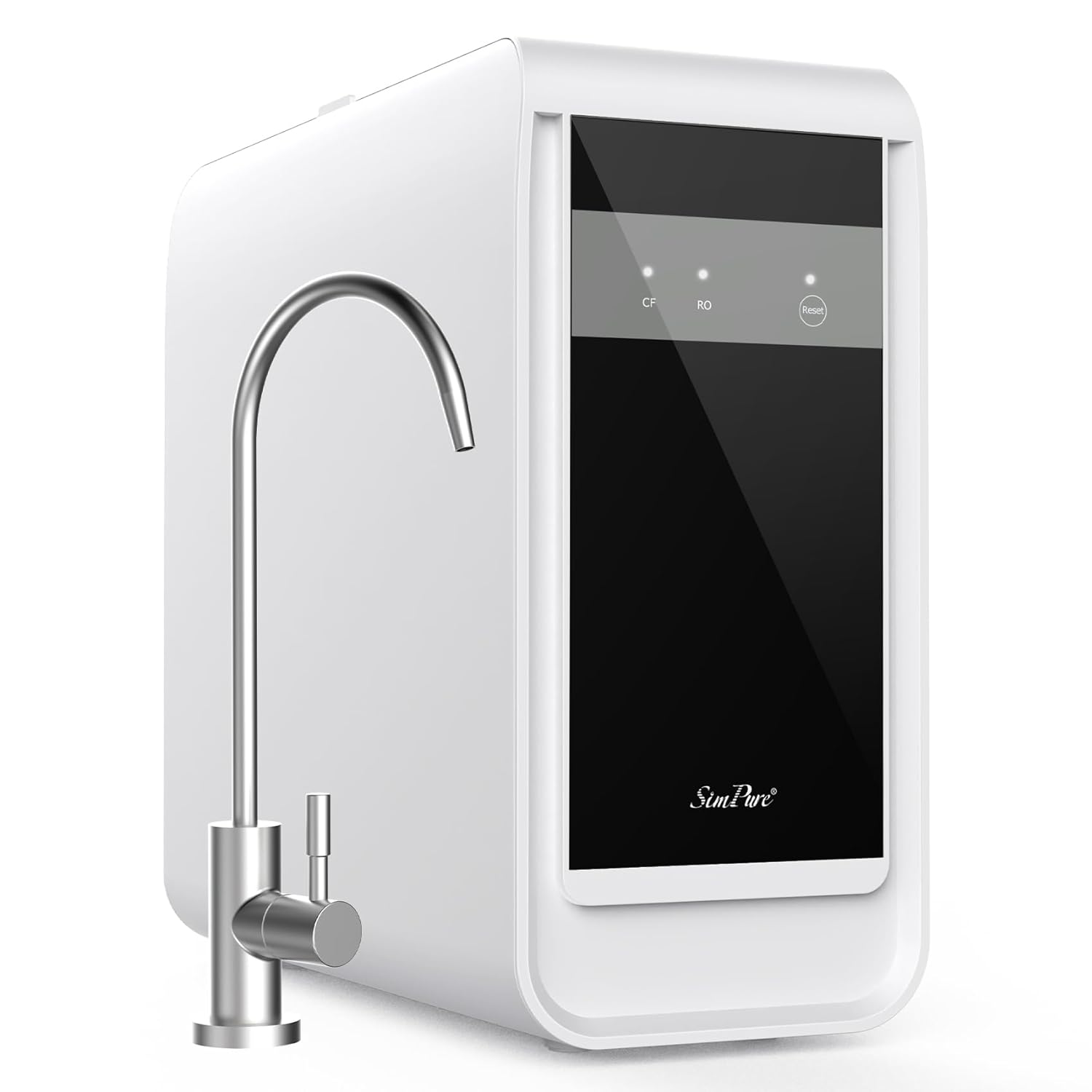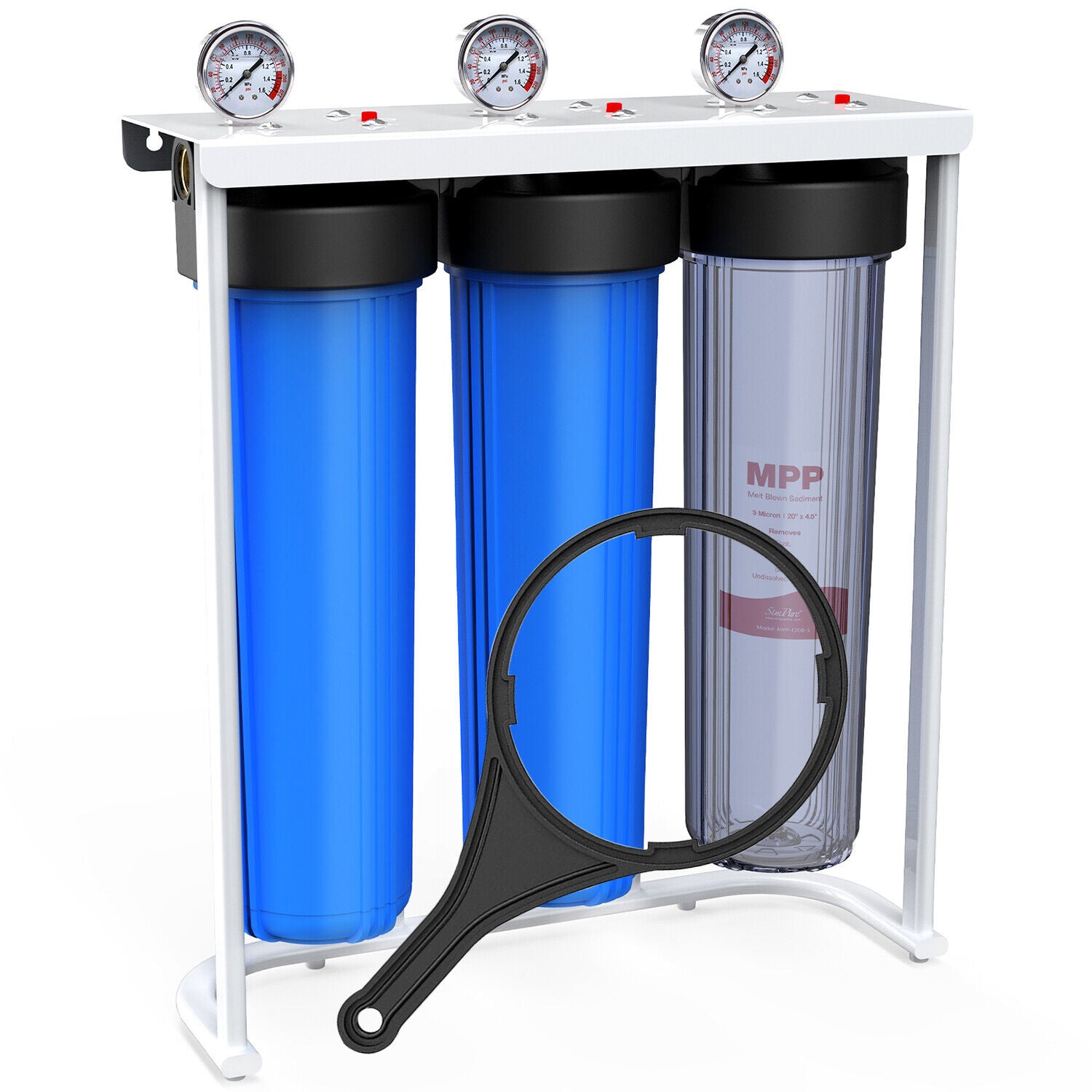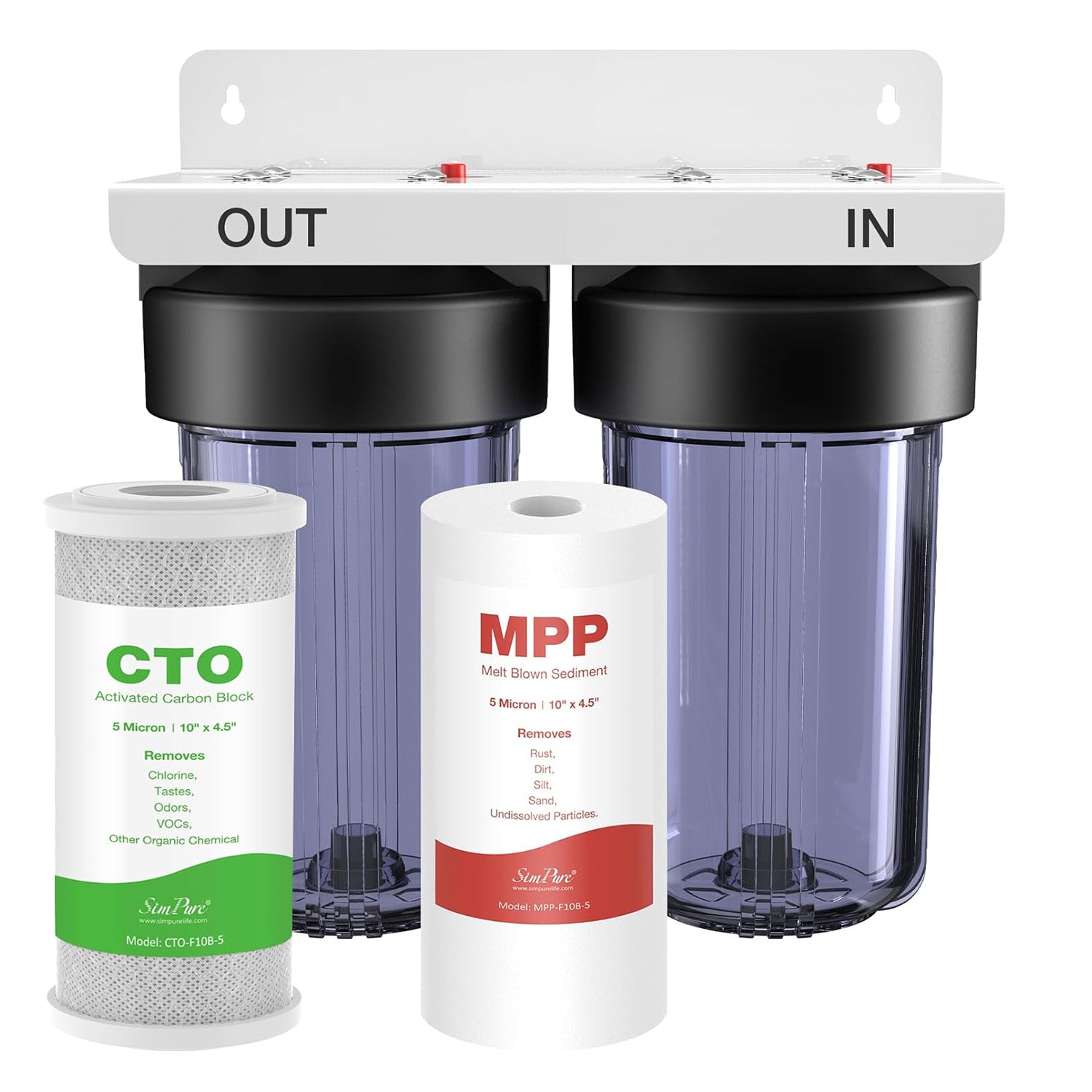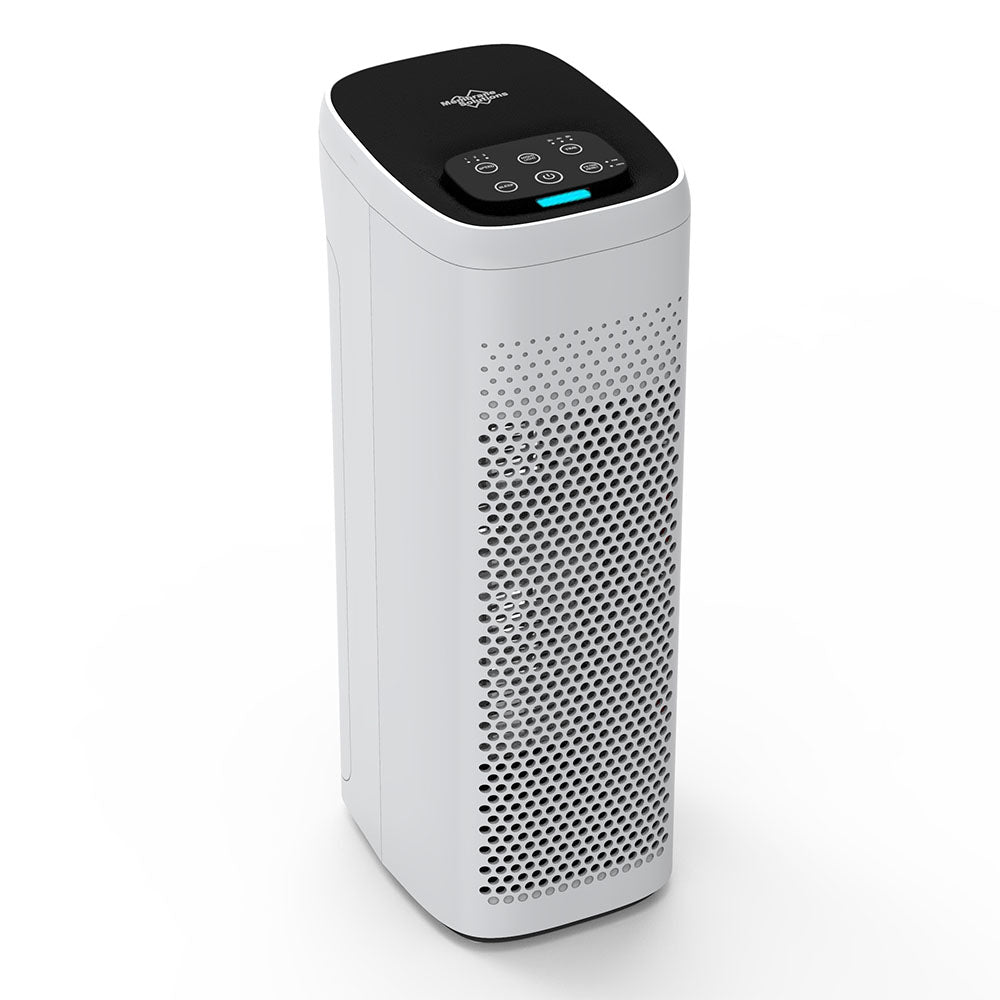In fact, there is no such thing as a pet-grade air purifier. However, there are air purifiers suitable for capturing air pollutants such as urine odor brought by pets like cat. Cats contribute to indoor air pollution with hair, dander, ticks, bacteria, and urine smells. Hair particles, ranging from large to small, pose respiratory risks, either floating in the air or settling in the respiratory system. Dander, in micrometer to millimeter sizes, carries allergens and bacteria, triggering allergies and infections. Tiny ticks, emitting allergens, can cause allergies on contact or inhalation. Bacteria, in micron sizes (0.5-1.0 microns), can float independently or attach to airborne particles like dust, hair, and dander. Additionally, cat excretions introduce distinctive odors such as ammonia, hydrogen sulfide, and uric acid, affecting indoor air quality.
How to Choose Air Purifier for Cat Urine Odor?
(Click this picture, and you can get a link to the best air purifier for removing the cat urine odor!)
After understanding the pollutants that cats may bring, let's talk about how to choose an air purifier for families with cats. Mainly consider the following 4 aspects, consumers can make choices according to the actual situation of their pets.
1. The Direction of the Air in and Out of the Air Purifier.
The air purifier should be able to catch the fluff of cats scattered in the air or the hair on the ground near the air purifier in time. From the perspective of the air inlet and outlet directions of the air purifier, it is not a good choice for the rear side to enter the air before the air exits,because the front air sweeps the ground and raises the ground pollutants (dust, hair, etc.), which is easy to be affected. People inhale. I suggest to use an air purifier with lower air inlets and left and right air inlets (a few tens of centimeters above the ground) at the same time. The air outlet can inhale pollutants suspended in the air, and the upper air outlet can ensure that the clean air is directly delivered to the breathing parts of the person.
2. Pre-filter.
The air purifier should have a pre-filter that is convenient for trapping hair. This filter is mainly used to collect hair and larger particles, has a larger dust holding capacity, and is easy to clean (preferably washable). Without this layer of net (similar to the filter used in the internal air conditioner), these hairs or large particles will be adsorbed on the main filter (filter). When the machine is turned off, because there is no suction, the pollutants will easily escape from the filter. , Floating in the air again; at the same time, these larger particles or hair will increase the burden of the utra HEPA air purifier and reduce its service life.
3. The Filtration Efficiency of Air Purifiers Against PM2.5.
Because cats can easily carry and produce bacteria as small as 0.1 micrometers, ordinary air purifiers have very low filtration efficiency for such extremely fine particles, while high-efficiency air purifiers, namely The H12 or H13 air purifier can remove 99.5% (H12) or 99.97% (H13) particles as small as 0.3 microns (bacterial grade) at one time,thereby reducing the time and quantity of fine particles such as bacteria. Protect health.
4. The Ability of the Air Purifier to Handle Peculiar Smells.
For the peculiar smell or odor produced by pets, in addition to ventilation, it is also a good choice to use an air purifier with a strong deodorizing ability. The practice has proved that activated carbon can absorb a variety of odors and harmful gases. When choosing a deodorizing air purifier, two aspects are mainly considered: A) The efficiency of removing gaseous pollutants. Given the air purification national standard, ammonia, etc. (pets produced Odor) Included in the test items, I suggest consumers refer to the removal efficiency of formaldehyde. How much does the filter contain activated carbon or other deodorizing materials?Generally speaking, for the same type of activated carbon, the greater the amount of carbon in the filter, the greater the content of activated carbon More, the longer its life span. The former indicator represents the speed of odor removal, and the latter indicator represents the service life of the filter.



